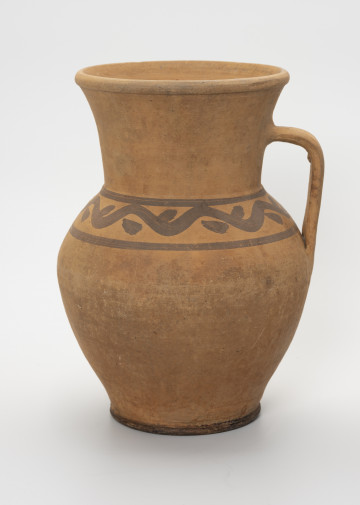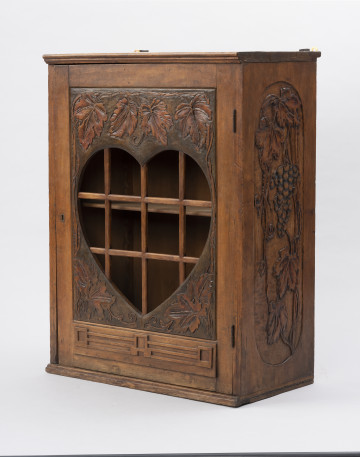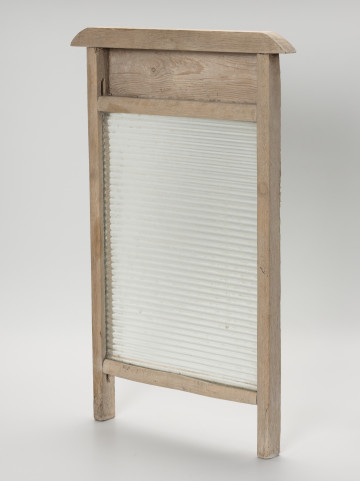
Jug
1890 — 1915
National Museum in Szczecin
Part of the collection: Folk ceramics
A makitra, called a pot or makotra in some regions, is a heavy ceramic bowl, sometimes made of stoneware. Its interior is covered with horizontal grooves, grooves or fine dots. The outer surface can be glazed, decorated with slipware, engraving or painted ornaments. It is used to grind and combine a variety of foods into a single, smooth paste. Grinding, also known as spinning food, is done with a wooden, less commonly porcelain, baton, referred to as a ball, and requires considerable physical effort on the part of the executor, as well as patience. They were also used to prepare Christmas dishes such as poppy seeds and kutia, as well as mayonnaise and sauces. Once an indispensable accessory in every kitchen, they have now been replaced by mixers and food processors. The makitra in the Szczecin museum's collection is certainly a vessel in which many cakes and various pastes were prepared. Its place of origin, the area around Lviv, the south-eastern area of pre-war Poland, is characterised by dishes with a heavy use of poppy seeds, including Christmas Eve kutia. The bottom of the makitra is porous and the groove areas are smoothed, reflecting its frequent and long-term use. Iwona Karwowska
Author / creator
Object type
makitra
Technique
throwing (pottery technique), firing
Material
ceramic
Origin / acquisition method
purchase
Creation time / dating
Creation / finding place
Owner
Muzeum Narodowe w Szczecinie
Identification number
Location / status

1890 — 1915
National Museum in Szczecin

1880 — 1910
National Museum in Szczecin

1950 — 1970
National Museum in Szczecin
DISCOVER this TOPIC
Castle Museum in Łańcut
DISCOVER this PATH
Educational path